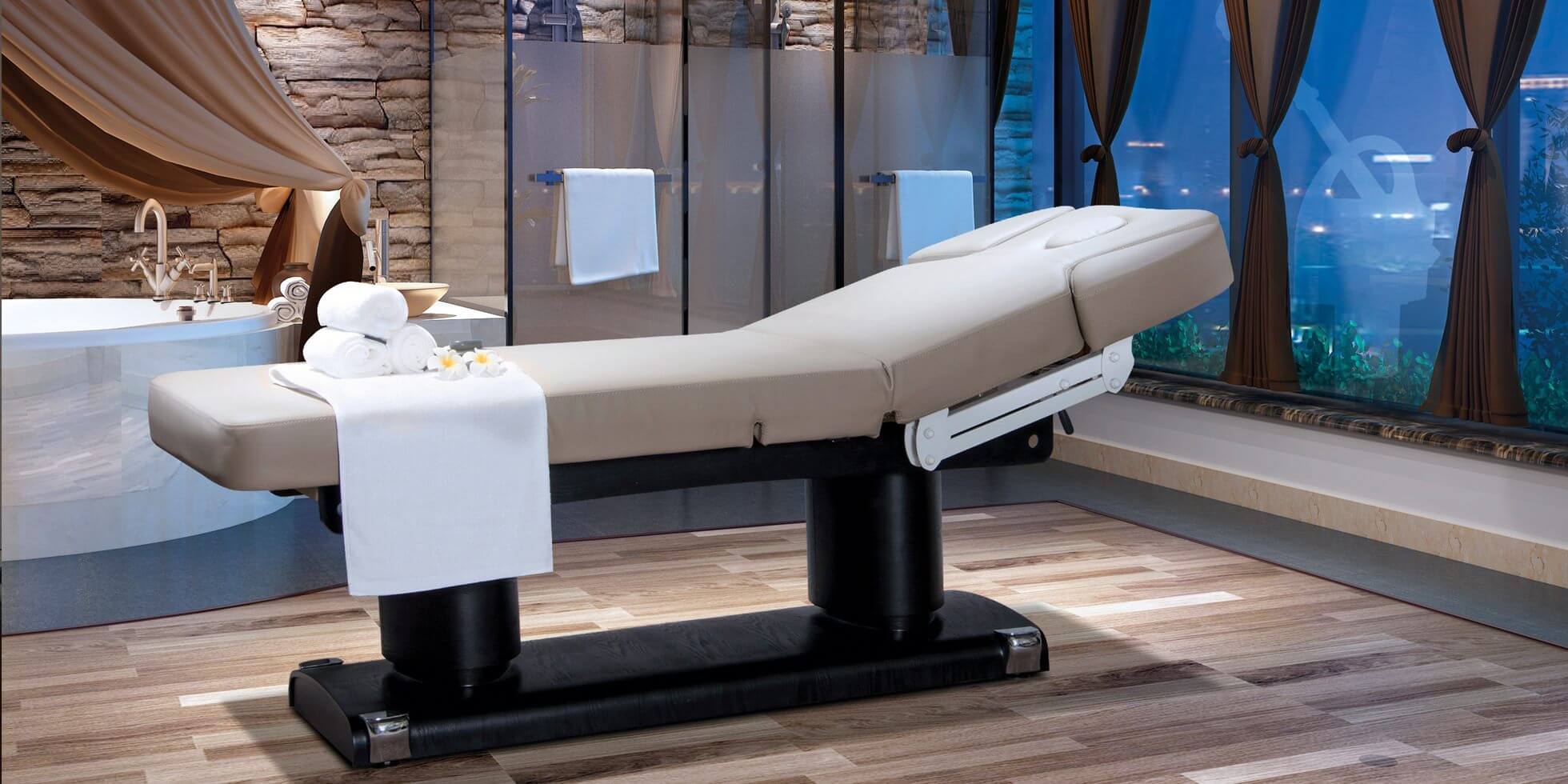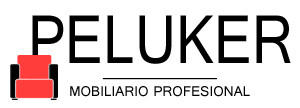The treatment table with heat is an essential piece of furniture in any aesthetics and beauty clinic or office. It provides comfort and ergonomics for both the client and the specialist during different treatments and procedures.
Incorporating heating into the treatment table offers multiple benefits that enhance the client’s experience and facilitate the professional’s work. In this article, we will thoroughly analyze why adding heating to the treatment table is an excellent investment.
Benefits of the Treatment Table with Heat
The heating in the treatment table provides the following benefits:
1. Greater comfort for the client
Comfort is a priority during any beauty treatment. The integrated heating in the table allows the client to lie down on a warm and cozy surface.
This is especially beneficial during longer treatments, when the client must remain still for prolonged periods. The heating prevents muscle tension and cramps, allowing them to fully relax.
2. Better absorption of creams and lotions
Many aesthetic treatments involve the application of creams, lotions, and other products on the skin. The heating of the table promotes skin vasodilation, allowing better and faster absorption of these products.
As a result, the active ingredients act more quickly and effectively.
3. Optimal skin preparation
Heating the skin before certain treatments, such as deep cleansing, extractions, and chemical peels, prepares it for better results.
The heating opens the pores, softens the skin, and allows for more gentle work on it. This results in less irritation and a faster recovery.
4. More efficient massages
The application of heat during a massage relaxes the muscles, improves blood circulation, and lymphatic drainage. Consequently, the massage is more efficient and pleasant.
A Treatment Table with Heating enhances these benefits, as it maintains the heat evenly throughout the session.
5. Greater versatility
A treatment table with built-in heating is much more versatile, allowing it to be used for a wider range of treatments.
From facial and body cleansing to firming treatments, relaxing massages, and decontracting therapies. The ability to regulate the temperature makes it suitable for all types of treatments.
6. Spa experience in the office
Providing controlled heat during any procedure adds a spa-like touch to the aesthetic office.
Clients appreciate it, as they feel pampered, and the experience resembles a relaxing day more than a clinical session. This helps retain current clients and attract new ones.
7. Improved equipment performance
Some aesthetic equipment, such as ultrasound, radiofrequency, and laser, perform better when the skin is warm, so heating the table enhances their results.
For example, cavitation and radiofrequency for firming and reducing measurements can be applied at lower temperatures safely, improving their performance.
8. More comfortable environment for the professional
Working with cold hands makes the aesthetician’s job more difficult. The heating on the table maintains a pleasant temperature in the environment, providing comfort during long working days.
This translates into higher productivity and less physical fatigue.

Types of Treatment Table with Heat
There are various heating options that can be incorporated into treatment tables:
Electric heating
This is the simplest and most economical system. It consists of an electric heating pad placed under the table’s upholstery. It provides heat evenly across the entire surface.
Its major disadvantage is that it does not allow for regulating specific heat zones. Electrical consumption is another factor to consider.
Water heating
It uses hot water pipes that run through the inside of the table. It allows precise temperature regulation and programming of the heating time.
Additionally, the heat is distributed more evenly. It requires a boiler and a specific hydraulic circuit.
Infrared heating
It employs infrared lamps under the table’s surface to emit heat. The main advantage is the ability to direct heat to localized areas.
It does not heat the environment, only the surface. It incurs high electrical consumption. Furthermore, not all clients tolerate this type of heating well.
Jade heating
Natural jade stones accumulate heat when exposed to high temperatures. This heat is then slowly released, providing pleasant and uniform heating.
It is the most natural method, but it requires regularly heating the stones. Additionally, it is the most expensive system.
How to choose the best heating option?
When selecting the heating system for the treatment table, consider:
- Budget: hot water systems and jade stones are the most expensive options.
- Versatility: electric heating allows for fewer adjustments than hydraulic or infrared heating.
- Type of treatments: if massages are performed, uniform heating is ideal. For localized treatments, infrared is a good alternative.
- Comfort: clients with circulatory problems tolerate electric and water heating better. Infrared can be too aggressive.
- Facilities: hydraulic heating requires modifications to the office’s water installation.
- Energy efficiency: electrical and infrared systems have high electricity consumption.
Taking all these factors into account, you can select the best heating solution that fits both the available budget and the needs of the aesthetic center.
Selecting the Ideal Treatment Table with Heat
In addition to heating, the treatment table must meet other characteristics to ensure comfort and safety. Some aspects to evaluate when purchasing a Treatment Table with Heat are:
- Ergonomics: the table should easily adapt to different working heights and allow for movement of the backrest and leg section.
- Upholstery: prefer waterproof, easy-to-clean, and stain-resistant upholstery. Vinyl and polyurethane are good options.
- Weight capacity: choose sturdy tables with a capacity to support at least 150 kg.
- Electrical system: if it has electric heating, the system should have moisture protection, and the cables should be concealed.
- Extra features: tables with a vibration system, electric height adjustment, or lighting are ideal for offering comprehensive treatments.
- Warranty: opt for well-known brands that offer at least a one-year warranty on both the structure and the heating system.
By following these tips, you can equip your aesthetic center with high-quality tables that will delight your clients. The comfort they provide is an investment that builds customer loyalty.

Frequently Asked Questions about Treatment Table with Heating
What is the approximate price of the Treatment Table with Heating?
Prices range from €1,000 to €5,000 or more, depending on the type of heating and added features.
Do they consume a lot of electricity?
It depends on the system. Electric heating has a moderate consumption of around 250W. Infrared requires more energy, approximately 500W. Hydraulic heating consumes electricity only to heat the water in the boiler.
Can I install heating later on a regular table?
Yes, it is possible by installing an electric or infrared system under the upholstery. However, it is more advisable to purchase the table already adapted from the factory for greater efficiency and safety.
Do they require a lot of cleaning and maintenance?
No, they are very easy to clean. The upholstery can be disinfected with special products after each client. Maintenance is limited to an annual inspection of the electrical or hydraulic components.
Are they safe for all types of clients?
Yes. The heating systems are designed to provide a pleasant but never excessive temperature. Additionally, they allow for regulating it according to each client. It should always be avoided for pregnant women, clients with circulatory problems, or those with very sensitive skin.
In conclusion, incorporating a heating system into the treatment table with heat is an intelligent decision for any beauty center. The ability to provide controlled heat maximizes client comfort and enhances the results of treatments.
There are various alternatives based on the needs and budget of each business. The important thing is to opt for quality equipment with all safety certifications. The client’s comfort and well-being should be the priority.



